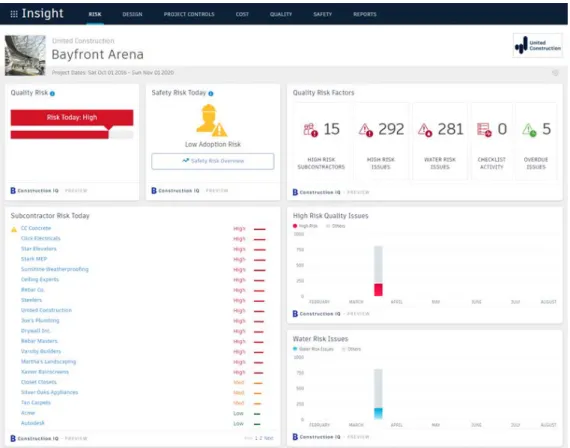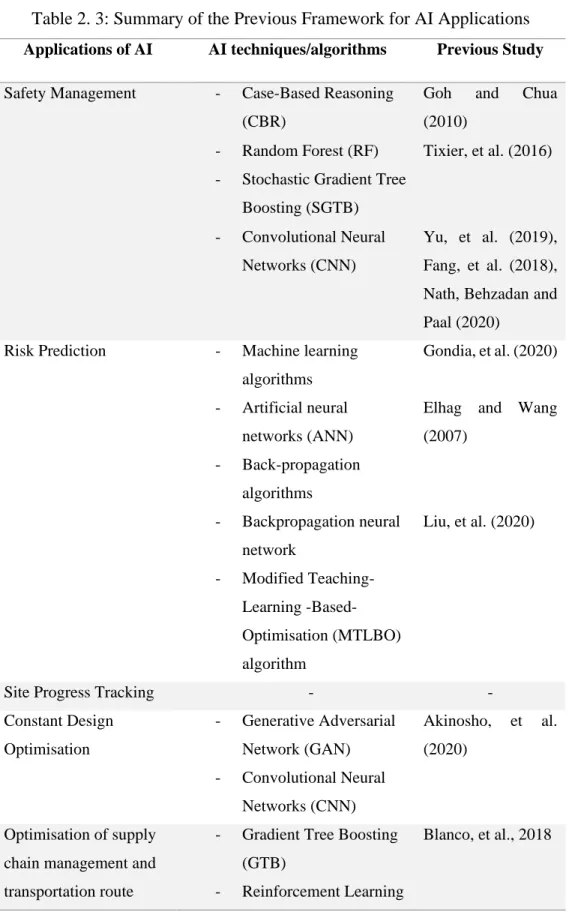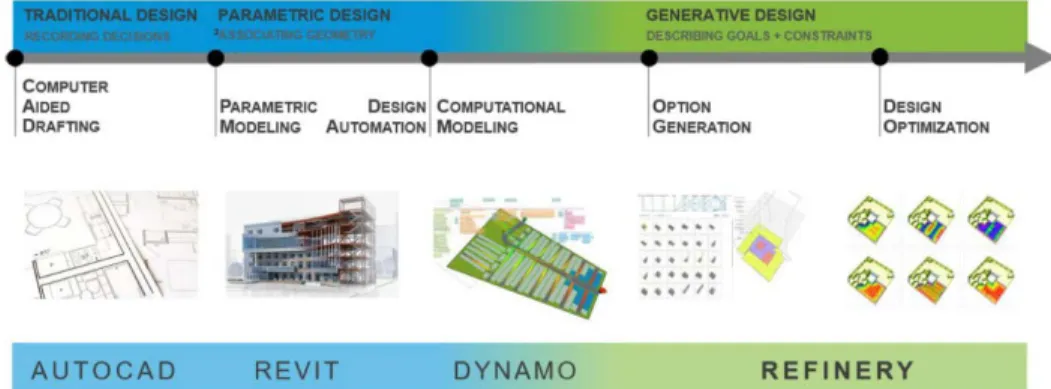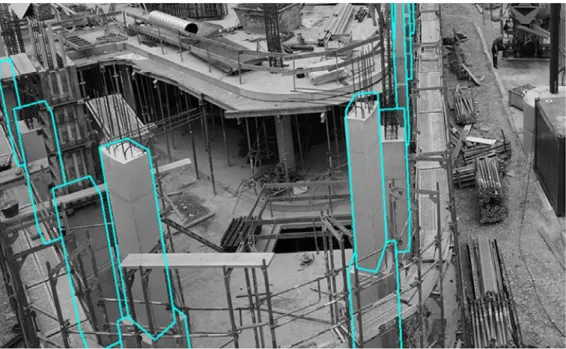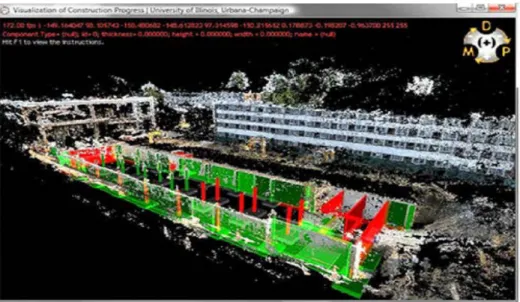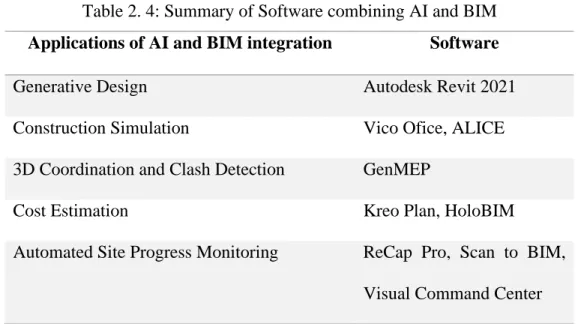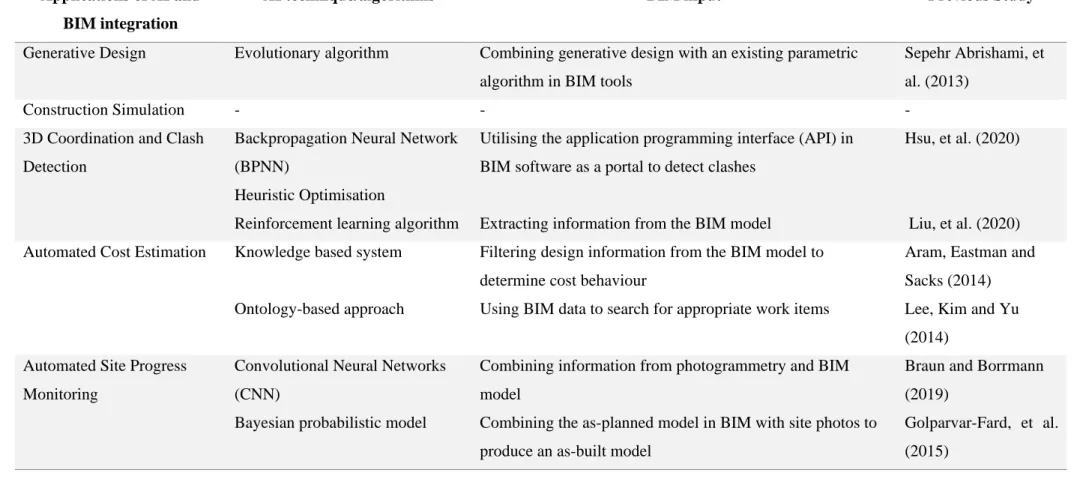I certify that this project report entitled "INVESTIGATING THE PERCEPTION ON THE INTEGRATION OF BUILDING INFORMATION MODELING AND ARTIFICIAL INTELLIGENCE IN CONSTRUCTION PROJECTS". Future studies are recommended to develop a detailed prototype for the integration of BIM and AI.
Background
AI can be integrated with BIM as a complementary approach to overcome the limitations in current BIM software while accelerating the development and integration of AI in the construction industry. The information in the existing BIM representations can be used as training data for the AI algorithms and in return AI can facilitate the automation of BIM processes in the future.
Problem Statement
There is also a certain similarity in the application areas of BIM and AI in construction processes. This study will thus focus on identifying the applications of combining AI and BIM and on trying to determine the opinion of construction players on this integration.
Research Objectives
Pan and Zhang (2021) summarized the roles of artificial intelligence in construction and mentioned that BIM can act as a digital support for artificial intelligence, and the integration of BIM and artificial intelligence can transform a traditional paper-oriented task into a web-managed task. This study can enable construction professionals to understand the advantages of integrating artificial intelligence and BIM, and the studied concepts can help policy makers to create incentive schemes for the introduction of this technology in the industry.
Research Methodology
Research Scope
Outline of the Study
Existing studies that attempt to provide solutions to combine AI and BIM will be identified. It will reveal the biggest barriers in the integration of AI and BIM and construction professionals' perception of AI and BIM integration.
Introduction
Definition of Building Information Modelling (BIM)
Definition of Artificial Intelligence (AI)
Additionally, reinforcement learning is a machine learning technique where an agent interacts with an environment that provides reward cues to assist the agent in decision making (Vasilev, et al., 2019).
Applications of Building Information Modelling (BIM) in Construction
- Schedule Management
- Quantity Takeoff
- Prefabrication Planning
- Quality Management
- Facility Management
- Safety Management
- Risk Prediction
- Site Progress Tracking
- Constant Design Optimisation
- Optimisation of Supply Chain Management and Transportation Route
- Generative Design
- Construction Simulation
- Automated Cost Estimation
- Automated Site Progress Monitoring
The daily risk assessment feature uses algorithms to review project issues and classify and rank the highest risk projects, subcontractors and. The risk assessment is shown below in the figure conducted a study that used ML algorithms to create predictive models of delay risk. Better supply chain management will be required to monitor cost and cash flows (Blanco, et al., 2018).
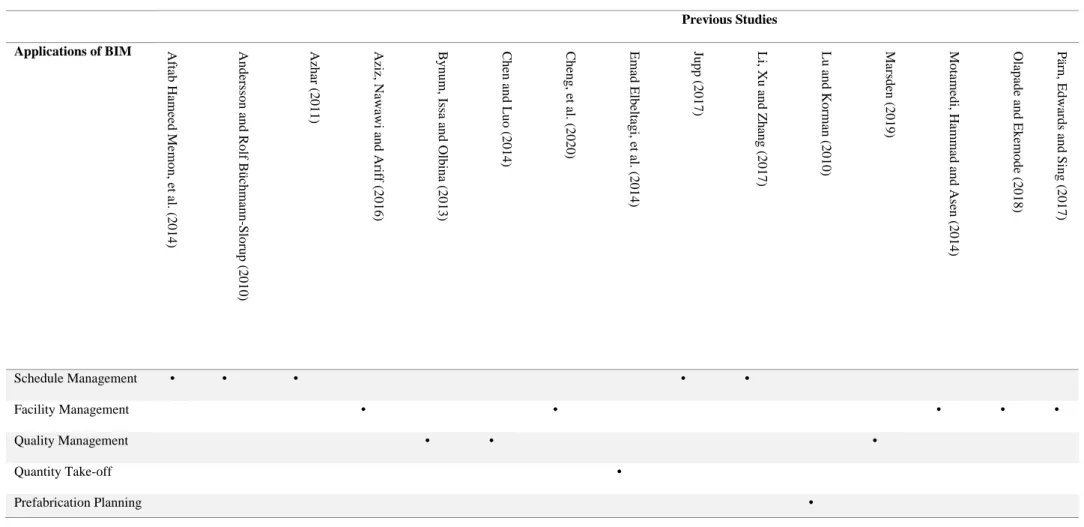
Benefits of integrating Artificial Intelligence (AI) and Building Information Modelling (BIM)
Benefits of Applications
Development of Construction Digital Twins (CDT)
Barriers to the integration of Building Information Modelling (BIM) and Artificial Intelligence (AI) in Construction
- Resistance to Change
- Lack of Knowledge on Technology
- Cost Considerations
- Lack of Detailed Information in BIM models
- Lack of Skilled Labour and Training
Moreover, the lack of as-built BIM models assigned with the actual cost of the project makes it difficult to obtain training data for AI algorithms (Juszczyk, 2017). The technical skills of the team can be significantly improved through interaction with technology (Othman, et al., 2021).
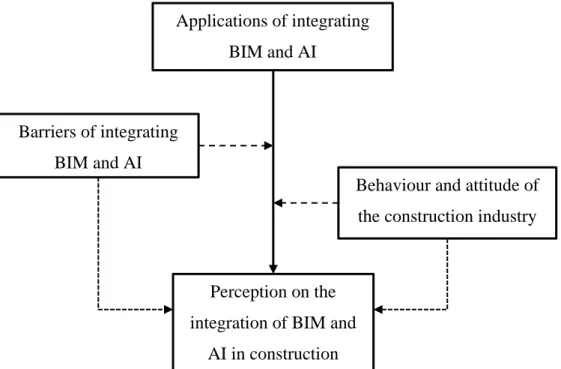
Definition of Research
Research Method
Quantitative Method
Figures and graphs used in this method make it possible to minimize, summarize and systematize complex data. Nevertheless, the shortcomings of this method include that it is overly formal and critical concrete details can be obscured when observations are standardized (Crossley, 2010).
Qualitative Method
Mixed Mode Method
The questionnaire survey is used to collect the general views of construction practitioners on the integration of BIM and AI and their agreement on the roadblocks of this integration. The semi-structured interview is then conducted to gain a detailed understanding of current practices undertaken by the industry, industry expectations and proposals and the underlying reasons behind the barriers to this integration.
Research Design
Theories such as the definitions of AI and BIM were examined to gain a basic understanding of the technologies. Instruments such as interviews and questionnaire survey were used to obtain the views of the construction industry on the integration of BIM and AI.
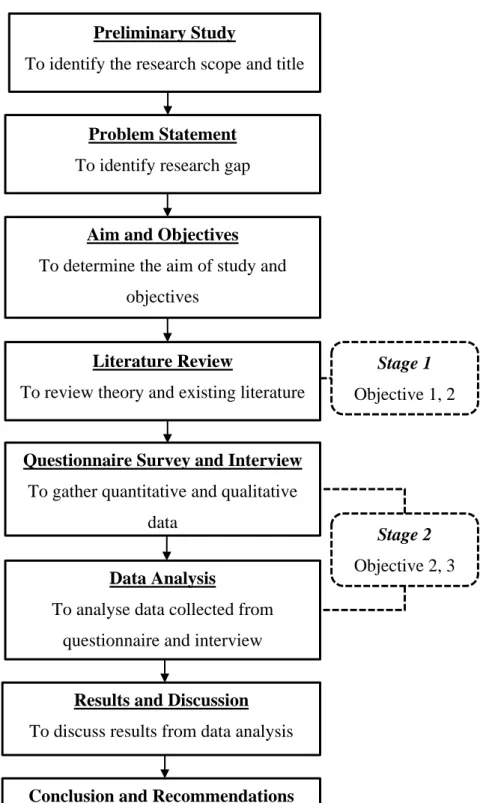
Justification of Adopted Research Design and Philosophy
Quantitative data is first collected using a questionnaire, followed by the collection of qualitative data from semi-structured interviews. Questionnaire data takes precedence in this study, while interview data acts as supplementary data to compare the questionnaire data.
Target Respondents
As an illustration, the results from the questionnaire show the general trend, while the results from the semi-structured interview lead to in-depth explanations and illustrations.
Central Limit Theorem
Questionnaire Design
Section D focuses on barriers to the integration of BIM and AI, with statements focusing on each barrier identified in Section 2.8 of the literature review. Sections B and C cover three aspects, namely BIM, AI and the integration of BIM and AI.
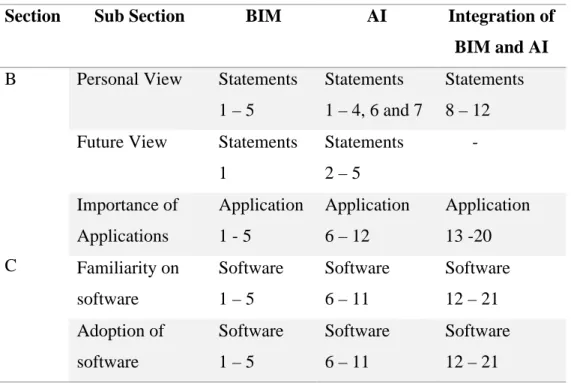
Interview Design
Normality Test
Reliability analysis checks for consistency in responses to all items in a questionnaire (Sekaran and Bougie, 2016). An alpha coefficient above 0.7 indicates that there is internal consistency in the set of questions and the subgroups in the questions are measuring the same thing (Saunders, Lewis, & Thornhill, 2015).
Descriptive Statistics
Inferential Statistics
Additionally, the Spearman's rank correlation is applied to identify the association between variables and measure the strength of this association (Saunders, Lewis and Thornhill, 2015). The intensity of the relationship between variables is represented by the correlation coefficient which is between the numbers – 1 and +1 with a value of zero which means that the variables are completely independent (Saunders, Lewis and Thornhill, 2015).
Thematic Analysis
Respondents’ Background
Normality of Data
Reliability Analysis
Findings from the Questionnaire
Perception towards Building Information Modelling (BIM) and Artificial Intelligence (AI)
As shown in Table 4.6 above, almost half of the respondents (49.0%) agree that “BIM implementation could become commonplace in the next 10 years”. C) A look into the future towards artificial intelligence in the construction industry. Comparatively, only 43.4% of respondents believe that the use of BIM for facility management is very important.
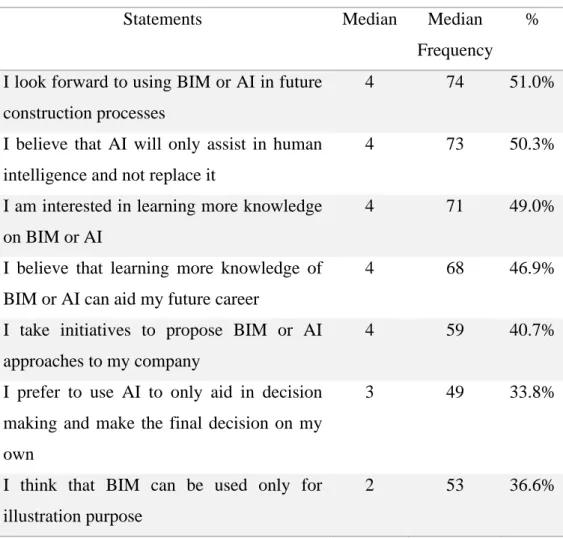
Perception towards the Integration of Building Information Modelling (BIM) and Artificial Intelligence (AI)
The opinion on the importance of the application "3D coordination and conflict detection for identifying defects in the BIM model" is the same between. From the results given in Table 4.13, the pairs of respondents who have a statistically significant difference in their opinion on the “importance of applications involving BIM and AI” are summarized below.
Current Practice of Building Information Modelling (BIM)
The group of architects (mean rank = 69.84) has higher usage of the Sketch Up software than the group of engineers (mean rank = 30.86). The group of engineers (mean rank = 51.31) has a higher use of the Sketch Up software than the group of quantity surveyors (mean rank = 40.07).
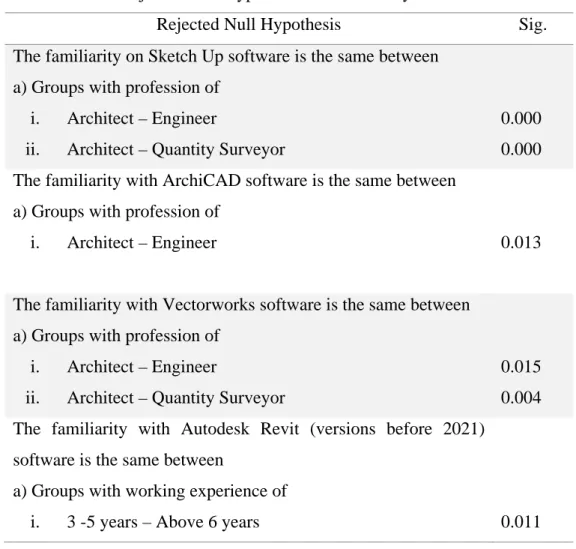
Current Practice of Artificial Intelligence (AI) in Construction The current practice towards AI in construction is analysed in terms of the
As can be seen in Table 4.18 above, there is a direct correlation coefficient between familiarity and adoption of each BIM software. As seen in Table 4.22 above, there is a direct correlation coefficient between familiarity and adoption of each AI software.
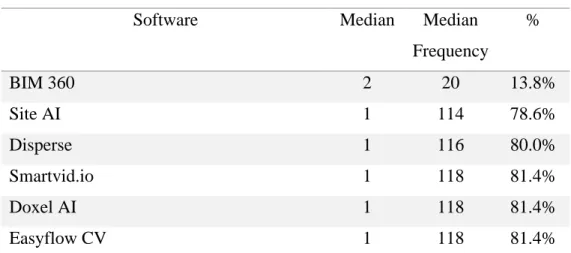
Current Practice of integrating Building Information Modelling (BIM) and Artificial Intelligence (AI) in Construction
The Kruskal Wallis test is used to compare the profession with the adoption of software that integrates BIM and AI. As shown in Table 4.26 above, there is a direct correlation coefficient between the knowledge and use of each software that integrates BIM and AI.
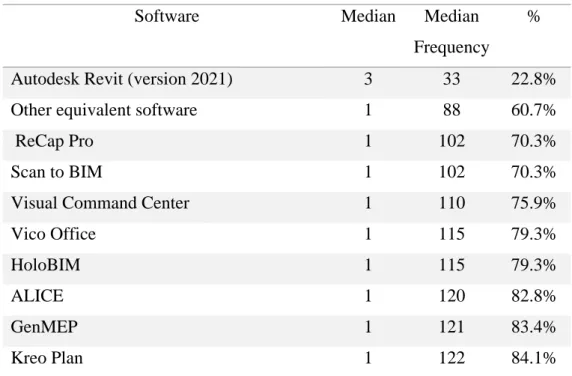
Barriers hindering the integration of Building Information Modelling (BIM) and Artificial Intelligence (AI) in Construction
As shown in Table 4.31, there is an inverse correlation between an individual's belief that the integration of BIM and AI will reduce the shortcomings of BIM and the likelihood that someone will previously encounter a bad experience with BIM or AI software. Similarly, there is an inverse correlation between an individual's belief that the integration of BIM and AI will improve AI performance and the likelihood that someone will have previously encountered a bad experience with BIM or AI software.
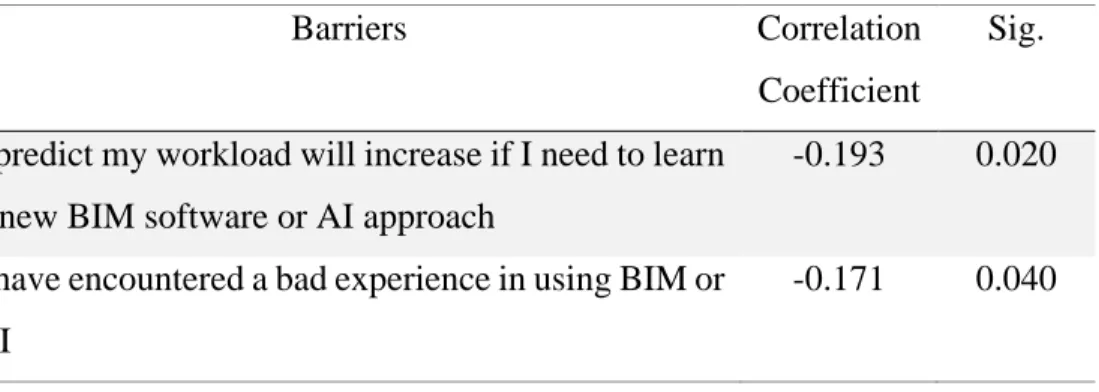
Relationship between the Perception towards the Importance of Applications integrating Building Information Modelling (BIM)
As shown in Table 4.33, there is an inverse correlation between an individual's belief that BIM and AI can complement each other through integration and a person's agreement that he or she anticipates that his or her workload will increase if learning new software is required. Similarly, there is an inverse correlation between an individual's belief that BIM and AI can complement each other through integration and the likelihood that someone will have previously had a bad experience with BIM or AI software.
Discussion on Questionnaire Findings
Perception towards the Integration of Building Information Modelling (BIM) and Artificial Intelligence (AI)
These findings indicate that the respondents are slightly more enthralled by the collaboration of these two technologies compared to learning BIM and AI independently and are excited to embrace this integration. The reason behind this difference may be that the respondents with 3 to 5 years of work experience have more experience using BIM software compared to other groups.
Current Practice of integrating Building Information Modelling (BIM) and Artificial Intelligence (AI)
Barriers hindering the Integration of Building Information Modelling (BIM) and Artificial Intelligence (AI)
Findings from Interview
Benefits of Building Information Modelling (BIM)
If you look at the 3D you can see if any of the rebars are clashing and if the shape fits or not. BIM has many advantages if you pay attention to every detail, if you pay attention to the maintenance benefits, if you have all the details of the construction.'
Current Practice of Building Information Modelling (BIM) Interviewee B and C have both use BIM software such as Autodesk Revit and
However, BIM adoption depends on project requirements and AutoCAD is still used for most construction processes and projects. If the project client requests BIM services, the architect will provide the Revit files of the BIM model to the engineers.
Problems of Building Information Modelling (BIM)
Problems Unfamiliar with the features in the software as the external training only taught the basic skills. Repetitive tasks are done due to the need to subscribe to both Autocad and Autodesk Revit. The current software available is not user friendly.
Personal View towards Artificial Intelligence (AI) in Construction Three of the interviewees perceive AI as recent and advanced technology and
I think we will be replaced if we don't learn how to use AI technology.” I also think that AI will reduce jobs for construction practitioners....there will be fewer jobs, fewer people on a team to achieve a similar outcome of similar performance.
Benefits of Artificial Intelligence (AI) in Construction
AI can help save costs, shorten the project timeframe and make the project progress smoothly.” If AI can learn from past experience, there will be many benefits, especially in project management and scheduling.”
Current and Coming Practice of Artificial Intelligence (AI) in Construction
For example, variation orders and post-construction claims can be reduced and final settlement becomes easier to implement or close.” Visions of the future Construction practitioners can be replaced if they do not adapt and learn Change in job scope.
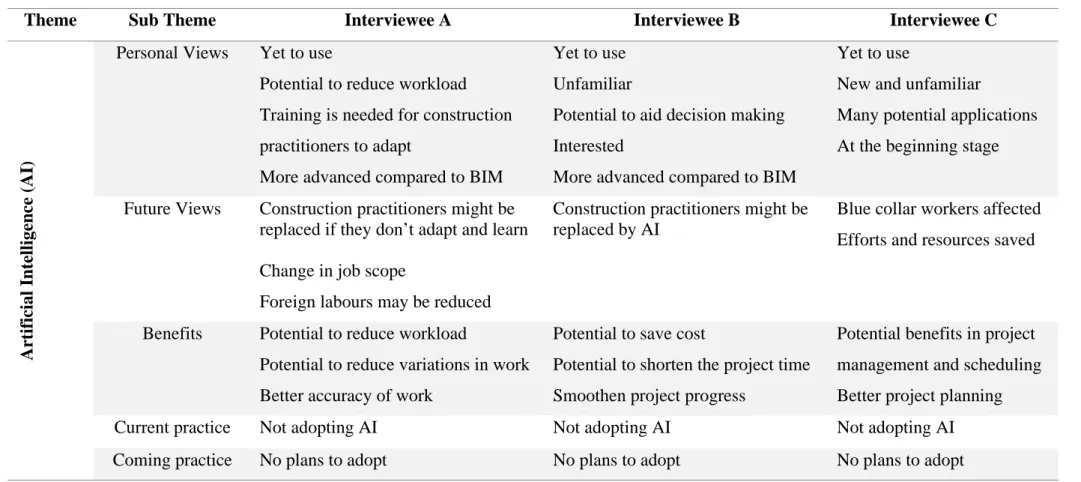
Personal View towards the Integration of Building Information Modelling (BIM) and Artificial Intelligence (AI)
Future View towards the Integration of Building Information Modelling (BIM) and Artificial Intelligence (AI)
I think that in the coming years, these technologies may not bring a big impact or change in the construction industry in Malaysia."
Benefits of the Integration of Building Information Modelling (BIM) and Artificial Intelligence (AI)
Expectations on the Integration of Building Information Modelling (BIM) and Artificial Intelligence (AI)
Interviewee C initially suggested that he did not have many expectations, as the features he could think of were already built into the software. However, he suggested a feature that he thinks is convenient for prefabrication in the construction industry.
Current and Coming Practice on the Integration of Building Information Modelling (BIM) and Artificial Intelligence (AI)
I think if you use the BIM drawings and put them into the factory computer and the factory can automatically build for you, all the drawings can fit on the factory side.”
Barriers hindering the Integration of Building Information Modelling (BIM) and Artificial Intelligence (AI)
Interviewees B and C emphasized that the benefits of implementing this technology should exceed the investment cost. He further said that there is a shortage of skilled manpower to implement this technology and the industry relies on cheap labour.
Suggested Solutions for the Integration of Building Information Modelling (BIM) and Artificial Intelligence (AI)
Predicting the lifetime of building components Automatic design of prefabricated components based on BIM models. Resistance to change when considering the traditional approach is effective. Authority and client requirements considerations.
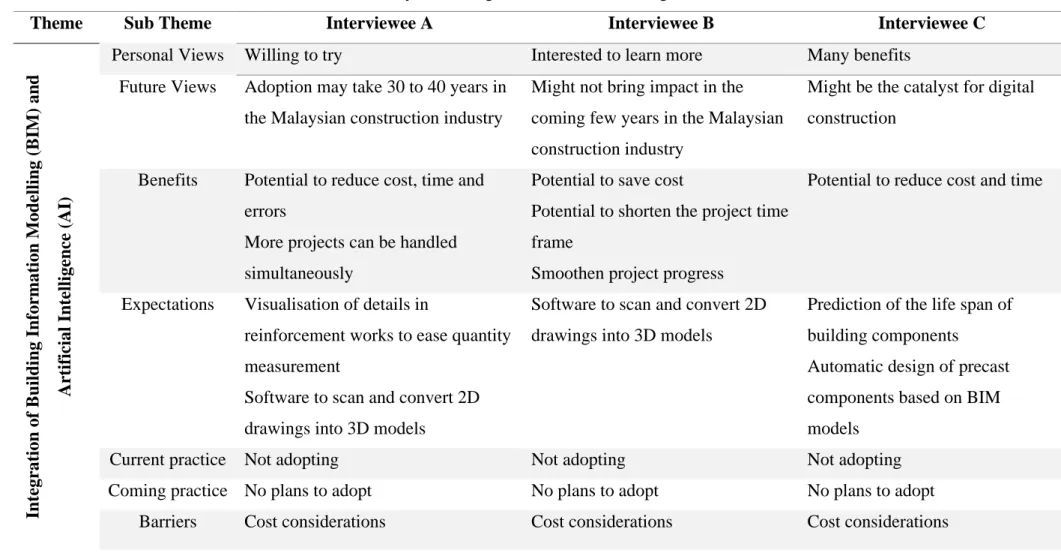
Discussion on Interview Findings
- Creating a Database from BIM Models
- Automated Classification of BIM Data
- Development of Intelligent BIM Systems
- Practical Applications of the Intelligent BIM Systems
Interviewee A also indicates that unfamiliarity with the features in the software is a major problem. Two AI approaches have been found to automatically classify the data in the BIM models.
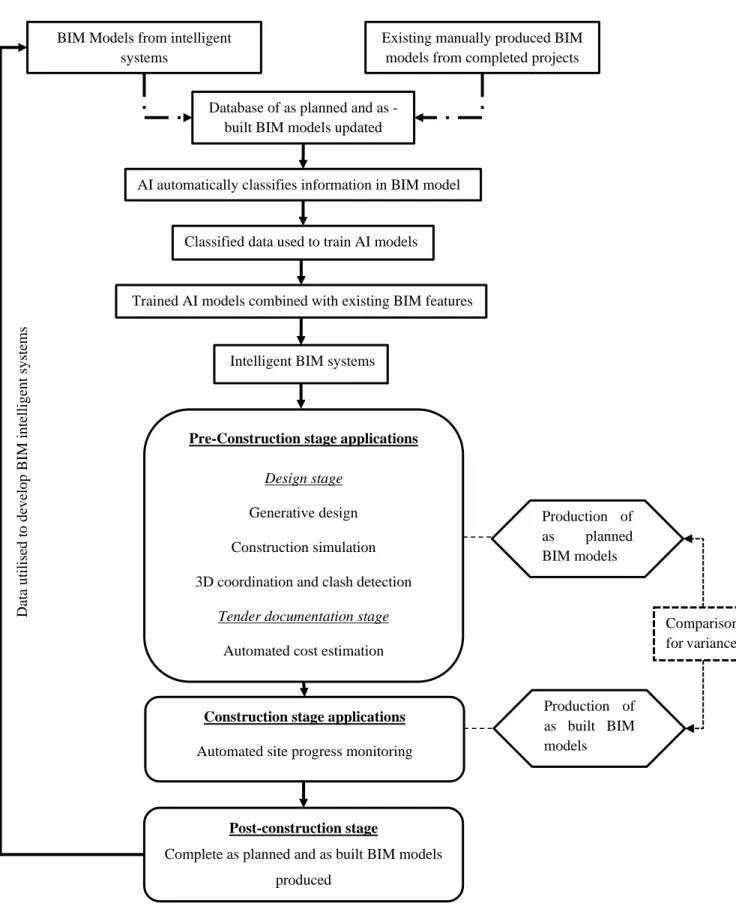
Introduction
Accomplishment of Research Objectives
On the other hand, construction workers also realize that this integration may not be realized in the coming years. However, practical integration and implementation cannot be achieved until BIM Levels 2 and 3 have been reached to obtain enough data in the BIM database to facilitate the development of this integration.
Research Implications
Research Limitations and Future Research
Available at:
Personal view towards the adoption and integration of AI and BIM in construction
Expectations in features/applications from the integration of AI and BIM
Current practice in adopting BIM or AI in construction processes a. What are the Building Information Modelling (BIM) or Artificial
Problems faced in the adoption of BIM or AI technologies
Coming practice or strategies in adopting BIM and AI
Barriers hindering the integration of BIM and AI in construction projects
Thus, there are still problems in implementing BIM in construction processes as its potential cannot be fully realized. Sometimes when bidding for large company projects, BIM approval is one of the minimum requirements to participate in the tender.
